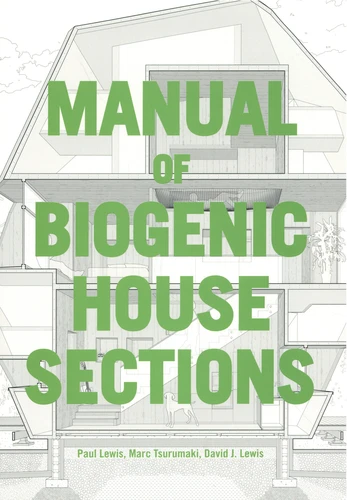Manual of Biogenic House Sections
Par : , ,Formats :
- Paiement en ligne :
- Livraison à domicile ou en point Mondial Relay indisponible
- Retrait Click and Collect en magasin gratuit
- Nombre de pages351
- PrésentationBroché
- FormatGrand Format
- Poids1.33 kg
- Dimensions19,0 cm × 28,0 cm × 2,3 cm
- ISBN978-1-957183-09-1
- EAN9781957183091
- Date de parution19/12/2022
- ÉditeurOro Editions
Résumé
Manual of Biogenic House Sections presents a visually compelling argument for rethinking the material basis of architecture in a time of environmental crisis. Asserting that the most viable means to radically reduce embodied carbon in buildings is to use plant and earth-based materials, the book demonstrates how this approach can catalyze new types of houses that reduce or sequester carbon, engage regenerative life cycles, and create healthier spaces for living.
Building on their acclaimed Manual of Section, Paul Lewis, Marc Tsurumaki, and David J. Lewis (the principals of LTL Architects) represent fifty-five innovative houses from around the world through intricately detailed cross-sectional perspectives and axonometrics complemented by photographs of construction processes, interiors, and exteriors. Analytical drawings make legible an approach to architecture based on circular material logics and a more holistic relationship to our shared environment.
Building on their acclaimed Manual of Section, Paul Lewis, Marc Tsurumaki, and David J. Lewis (the principals of LTL Architects) represent fifty-five innovative houses from around the world through intricately detailed cross-sectional perspectives and axonometrics complemented by photographs of construction processes, interiors, and exteriors. Analytical drawings make legible an approach to architecture based on circular material logics and a more holistic relationship to our shared environment.
Manual of Biogenic House Sections presents a visually compelling argument for rethinking the material basis of architecture in a time of environmental crisis. Asserting that the most viable means to radically reduce embodied carbon in buildings is to use plant and earth-based materials, the book demonstrates how this approach can catalyze new types of houses that reduce or sequester carbon, engage regenerative life cycles, and create healthier spaces for living.
Building on their acclaimed Manual of Section, Paul Lewis, Marc Tsurumaki, and David J. Lewis (the principals of LTL Architects) represent fifty-five innovative houses from around the world through intricately detailed cross-sectional perspectives and axonometrics complemented by photographs of construction processes, interiors, and exteriors. Analytical drawings make legible an approach to architecture based on circular material logics and a more holistic relationship to our shared environment.
Building on their acclaimed Manual of Section, Paul Lewis, Marc Tsurumaki, and David J. Lewis (the principals of LTL Architects) represent fifty-five innovative houses from around the world through intricately detailed cross-sectional perspectives and axonometrics complemented by photographs of construction processes, interiors, and exteriors. Analytical drawings make legible an approach to architecture based on circular material logics and a more holistic relationship to our shared environment.









